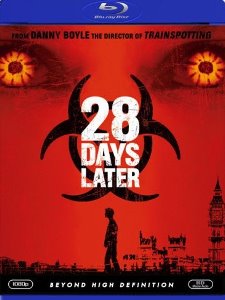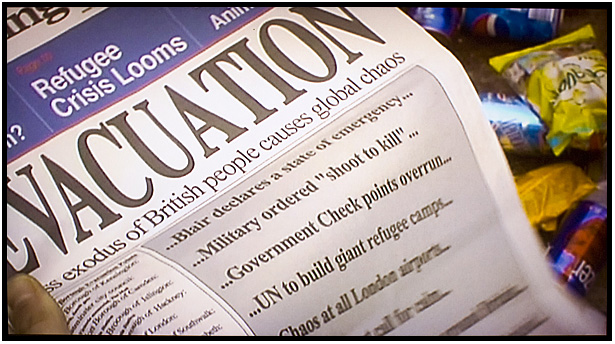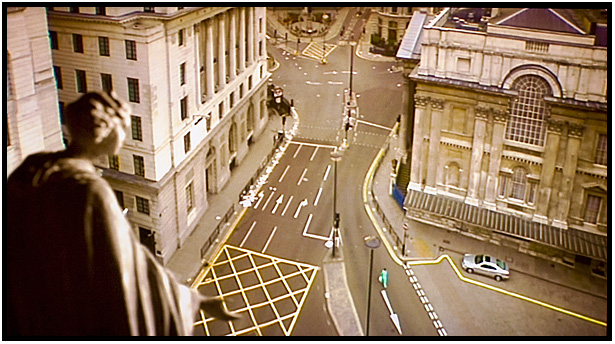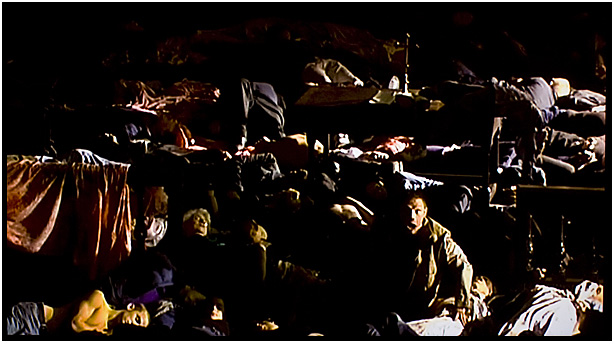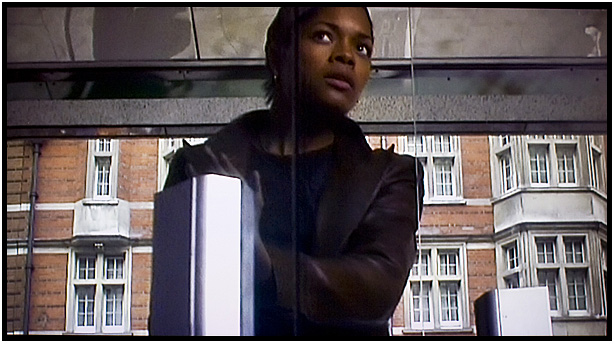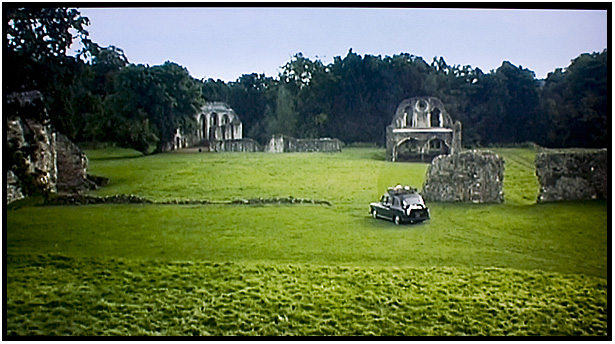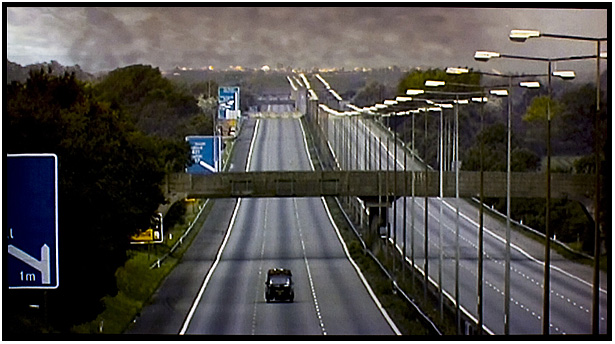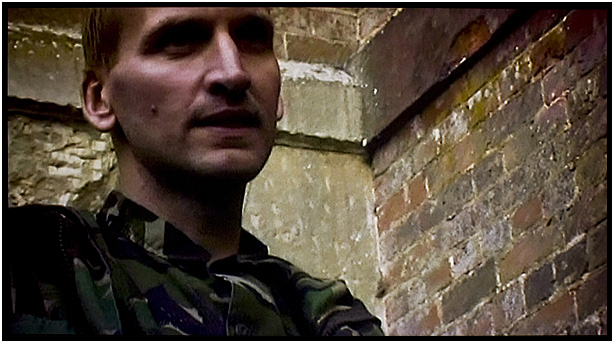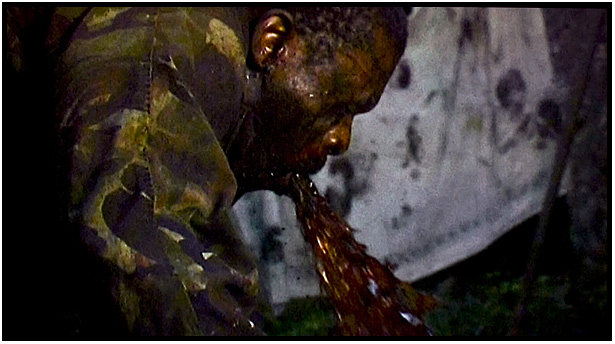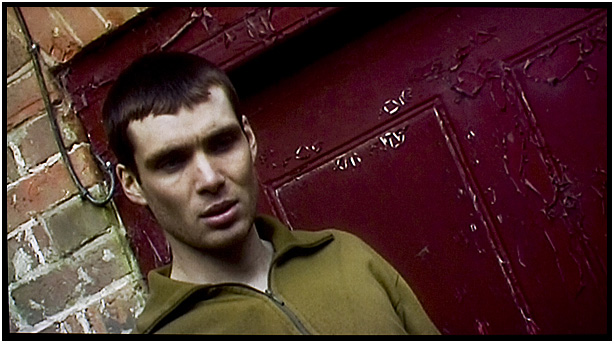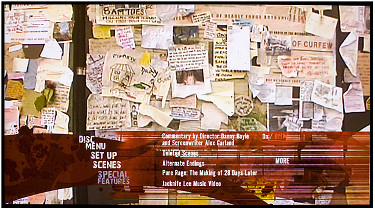28 Days Later... BRD
(Danny Boyle - 2003)
Studio: DNA Films (USA) / 20th Century Fox Home Entertainment (USA)
Video:
Aspect ratio: 1.85:1
Feature film: 1080p / AVC @ 36 MBPS
113 minutes
Supplements: HD/SD [4:3 & letterboxed]
Audio:
English DTS HD 5.1 Master Lossless Audio
French DD 5.1 Surround
Spanish DD 5.1 Surround
Subtitles:
English SDH, Spanish, Korean & Chinese
Extras
• Commentary by Director Danny Boyle and Screenwriter Alex Garland
• Featurette: Pure Rage: The Making of 28 Days Later
• Deleted Scenes with optional commentary
• Alternate Endings with optional commentary
• Jacknife Lee Music Video
• Still Photo Galleries
• Animated Storyboards
• Theatrical Teaser & Trailer
32 chapters
Standard Blu-ray case:
1 disc: 50GB dual layer
Release Date: October 9, 2007
28 Days Later ~ Comment
You'll notice that the title of this movie isn't The Incredible 28 Days Later – which is a little too bad, because I would have relished the opportunity to write things like: incredibly intense, incredibly suspenseful, incredibly violent, incredibly bloody, incredibly not for the squeamish – and, arguably, the most compelling film of its genre, ever.
28 Days Later is not particularly original in concept, owing much to the inexplicable horror of George Romero's Night Of The Living Dead, the social breakdown of Day Of The Triffids, and the joyless inevitability of Nevil Shute's On The Beach. It is in the nature of its unyielding intensity and violence, the graphic consequences of the breakdown of society, and the subtle way the actions of its characters and the cinematic narrative argue its politics, rather than in dialog, that sets this new film apart.
Militant animal rights activists, in their attempt to free their fellow simians from a research lab where they are evidently mistreated, unleash an virulent epidemic. [The U.S. government isn't the only group with suckingly bad intelligence!] Apparently, scientists had been trying to understand the mechanics of rage by infecting their subjects with unrelenting images of violence. The animals, once released, consequently become carriers of the poison, as do the humans they bite. 28 days later, human society - now mostly zombies, and fast moving ones at that - is in its final throws of anarchy, with few survivors.
Rage, Alex Garland argues in his original screenplay, is highly infectious, highly contagious, and learned. The warning would not be lost even on contemporary teenagers who happen into the theatre believing they are about to see another slasher movie – which this is not. Quite the contrary, 28 Days Later is a horror film, a reflection of the Holocaust - the horror show of the mid twentieth century - since both are about how ordinary people behave when confronted with the end of the world, viz., the end of social order.
28 Days Later asks the big questions: How long would it take to give up hope if you were convinced you had no future? On the other hand, what might mitigate your desperation? In order to survive, would you be more likely to kill, to revert to pre-Mosaic lawlessness, or to risk, to trust? To put the question in another context, if you were on a sinking Titanic, whom, if anyone, would you lead to an empty seat on a lifeboat?
The trick to maintaining suspense in a pure horror movie is to strike the right balance between the denial of the expected and the arrival of the unexpected. When someone goes into a dark room, or up a staircase, we should rightly be concerned for their safety, maybe even their sanity. But the obvious should be delayed in a deliberately designed rhythm of suspense, terror, and relief. Death, when it befalls a character we come to know, should not always be deserved nor, for that matter, arbitrary. It might, as in Seven Samurai, have dramatic significance for that character's life journey, perhaps even irony. 28 Days Later aspires to these ends. In this, it sets itself apart from those of the genre that have come before.
From the moment we first see him, exposed and vulnerable, we worry about Jim's prospects. His "Hello," as he wanders the empty streets, is a statement of his questioning bewilderment and, as we expect, an invitation to attack; but it is also a reflection of his character: in contrast to others, Jim reaches out even to those whom he ought to fear. How that "Hello" is developed is another one of the subtle ways 28 Days Later plays in another league.
The director, Danny Boyle, doesn't readily flinch from his subject. In Trainspotting, it was heroin addiction and the devastating effects it can have on a family. In 28 Days Later, the internecine consequences of unbridled rage make the present Iraq expedition look like a skirmish between platoons armed with slingshots. And make no mistake, Garland and Boyle are very clear that humanity is now only a hairsbreadth away from what they portray here. The handwriting is on the wall, so to speak.
As in Trainspotting, Boyle uses extant music to good effect. Then, it was rock music of the past 20 years. Here, it's Fauré's Requiem, Gounod's Ave Maria, and Brian Eno. John Murphy's original score serves well to support the action and the mood, but it's the older music that nails it with sequences of exquisite beauty, mixed eerily into a soundtrack of which Kubrick would have been proud.
Except for Christopher Eccleston (Elizabeth, The Others and a recently reincarnated Dr. Who) and Brendan Gleeson (Braveheart, Troy and a couple of recent Harry Potters), most American audiences would have been unfamiliar with the actors in this movie when it came out 5 years ago. And even though Gleeson provides a much needed anchor at just the right moment, there are no characters with the charisma of Ewan McGregor's carefree Renton or Robert Carlyle's paranoid Begbie. [Carlyle appears in the sequel, 28 Weeks Later.] 28 Days Later was the breakout film for Cillian Murphy, who plays Jim. He followed this quickly with roles in +Girl With a Pearl Earring and Cold Mountain before landing the part of the creepy Dr. Crane in Batman Begins. Since then Murphy has gone on critical acclaim in Ken Loach's The Wind That Shakes the Barley, which took the Golden Palm at last year's Cannes Film Festival. Naomie Harris, who plays Selena, the cynical survivalist who guides Jim in his education, did a couple of seasons on the early 1990's British television series, The Tomorrow People – a sci-fi program about teenagers with special powers to heal and protect. 28 Days Later remains faithful to its B movie roots with actors that understand that their characters are pawns in the hands of their creators, yet strive to rise above it.
One comment about the production design: There is a considerable amount of CGI in this film. It's intent lends an unreality that permits just enough distance to tolerate the implications of what we see. That said, understand that 28 Days Later earns its R rating. Parents be warned: No one under 30 should see this film other than in the company of an adult.
28 Days Later ~ The Score Card
The Movie : 9
Jim wakes up in a hospital after a month-long comatose siesta to an empty room, an empty floor, and the same for his hospital, a few square blocks outside, and what appears to be an entire city devoid of people – living ones anyhow. It seems that four weeks earlier, a group of overzealous animal rights minutemen raided a laboratory where some pretty strange experiments were going on, much to the general unrest of the simian population within. The scientists were interested in what is involved in the primitive rage response. They had developed a vaccine along the way, but one thing led to another – it was partly a question of timing – and the monkeys infected the activists with the virus. Curious thing, this virus: it almost instantly turns its victim into a homicidal cannibal. Indeed, the victims, now zombies with the ability to outrun many a fleeing human, found a ready supply of human meat with the gift that kept on giving like a chain letter on the Internet. By the time Jim woke up, the country had been pretty well devastated, though there remained a few ready-to-eat families in hiding, some members of which having only just been orphaned –like poor Jim here. Rumors circulated of a sanctuary called, funnily enough, "Sanctuary," which turned out to be a hell house of its own.
Image : 5 (4~6~6/9)
Now for the bad news:? In
absolute terms, the image quality is less good than your
average 480/.? SD DVDThe score of 5 indicates a relative
level of excellence compared to other Blu-ray DVDs.? The
score in parentheses represents: first, a value for the
image in absolute terms; and, second, how that image
compares to what I believe is the current best we can expect
in the theatre.?
There is only negligible difference between the 480 and 1080
DVD editions of this movie ? and for a very simple reason:
the source material sucks.? The original movie was shot on a
Canon XL-1s which, together with a not inconsiderable amount
of noisy post-processing, is not the ideal medium if you
expect image scrutiny.? Razor sharp precision was not their
aim.? Sadly, high definition home video is not where Boyle &
Co anticipated their movie to end up, for the medium shows
the limitations of the original in all its gory ? and the
bigger your screen, the worse it looks.? In a given medium
shot, hair is matted, faces have no texture.? In strongly
backlit situations, such as in the tunnel where the
survivors attend to their vehicle as rats and infected
descend, the bleed from the strong light bleeds blue into
the heads of the unsuspecting.? If you see a qualitative
difference between the SD and BD editions ? and I believe I
do ? it could just as easily be attributed to scaling.? The
better your 480<1080 scaler, the less difference.
|
|
|
|
|
|
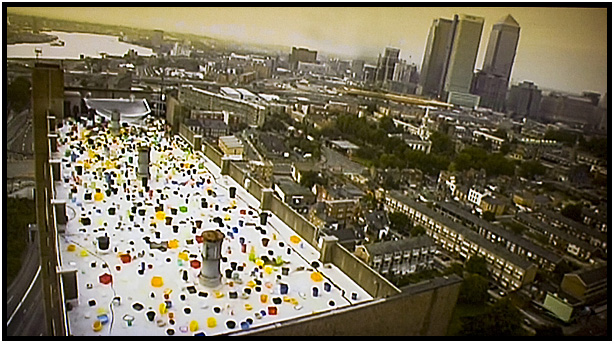 |
|
|
|
|
|
|
|
|
|
|
|
|
Audio & Music : 7/9
You might think, considering the image quality, that the audio would be less than stellar, but the fact is that it is much better – and that makes sense, since they are independently derived: further evidence that the super 8 image quality is intentional. The audio isn't top drawer, else that would have resulted in too much of a disconnect between picture and sound.
Operations : 7
Fox gets us to main menu directly, and from there we navigate to the feature film in a straightforward manner. The chapter thumbnails are large and titled. Thank you. On the other hand, like many Special Features menus, once in one of the extras, you can't get directly back to the Features menu directly. A bit tedious, really.
Extras : 7
In varying resolution and formats, some with commentaries, some not. Only the alternate ending is anamorphic, for all the good it does. On the other hand, the brief animated storyboard is sharp as a tack - and as small as a postage stamp. I rather liked Danny Boyle's commentary, as much for his tone as the information offered about production decisions, which are enormous, perhaps especially when you're on a budget.
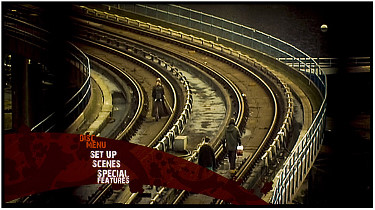 |
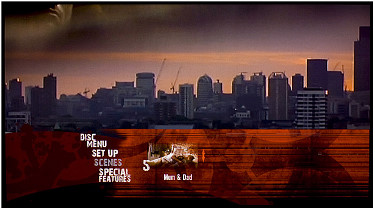 |
|
|
|
Recommendation: 9/6
I'm in something of a quandary here, as I want to recommend the
movie for its own sake, but must also caution against
expectations that you're going to get much by picking up the
Blu-ray.? So my faint praise conclusion is that while the high
definition edition presents no good reason to "upgrade" (both
have the commentary and the Pure Rage featurette), if you don't
have the movie, this is as good a way to watch it as any.
Leonard Norwitz
LensViews
October 12th, 2007
COMING SOON:
Casino Royale
Enter the Dragon
